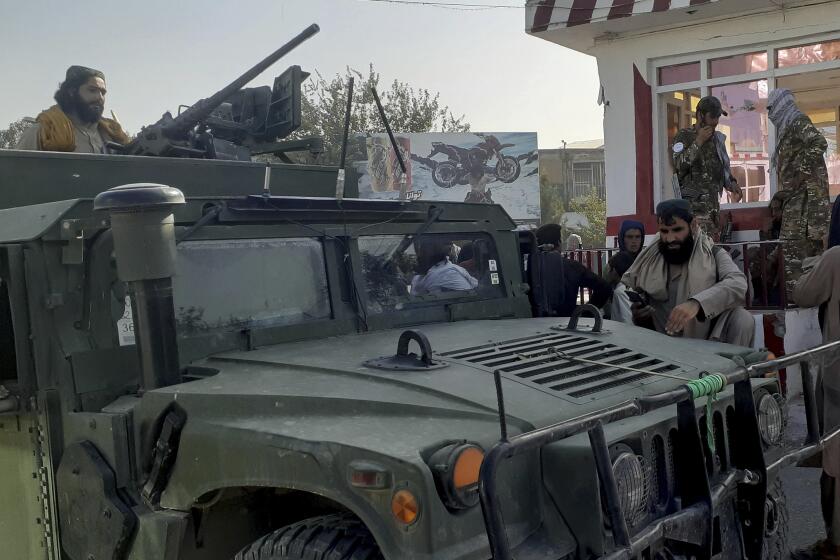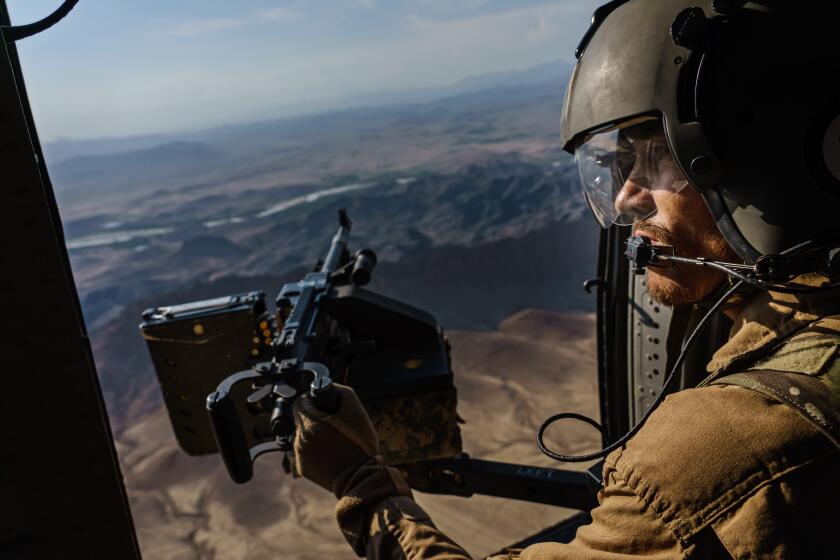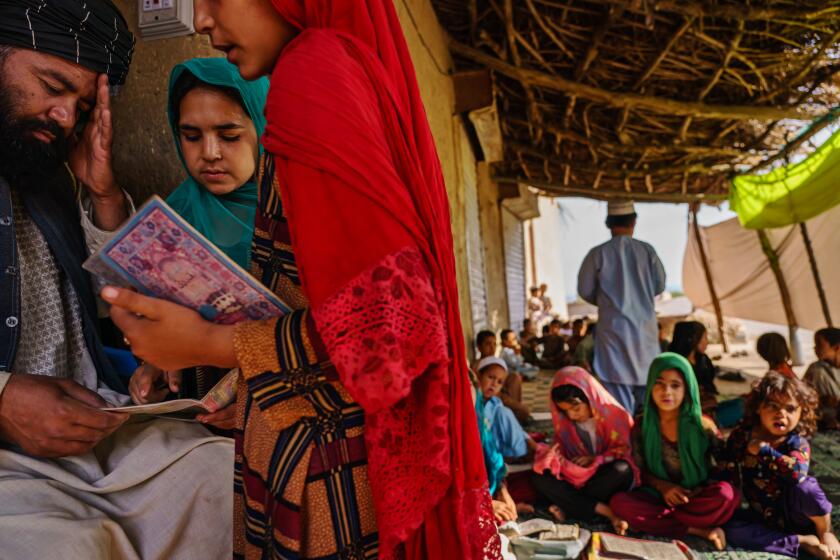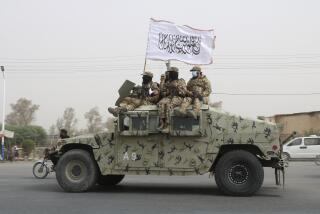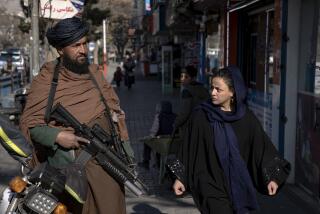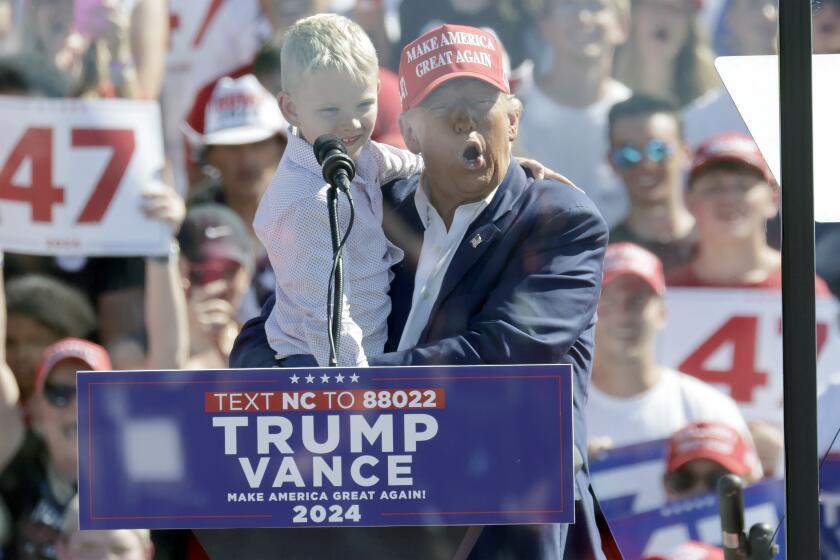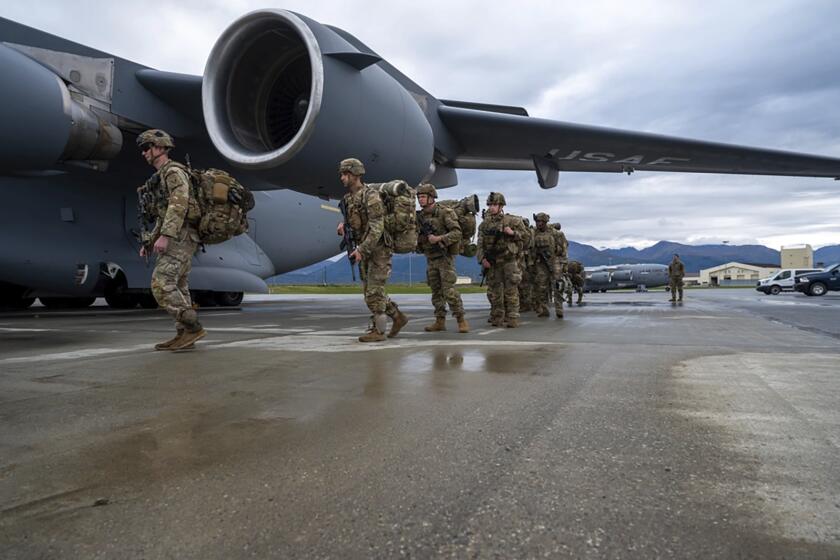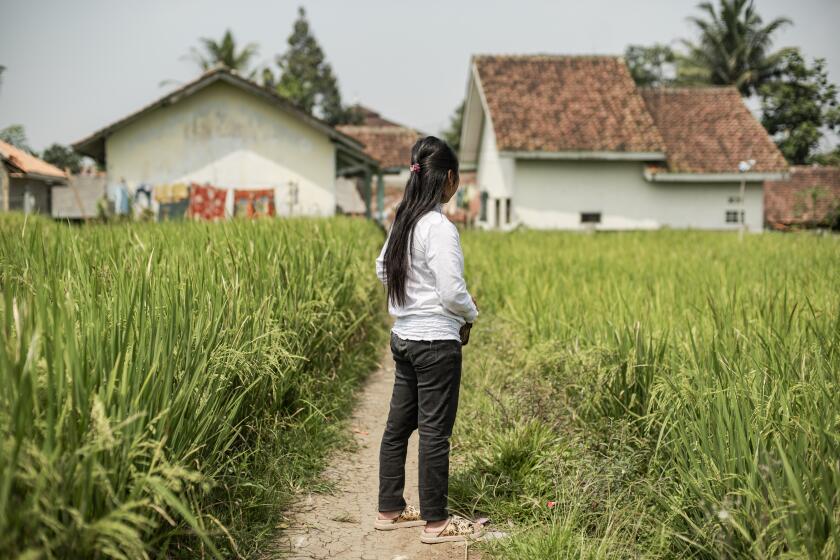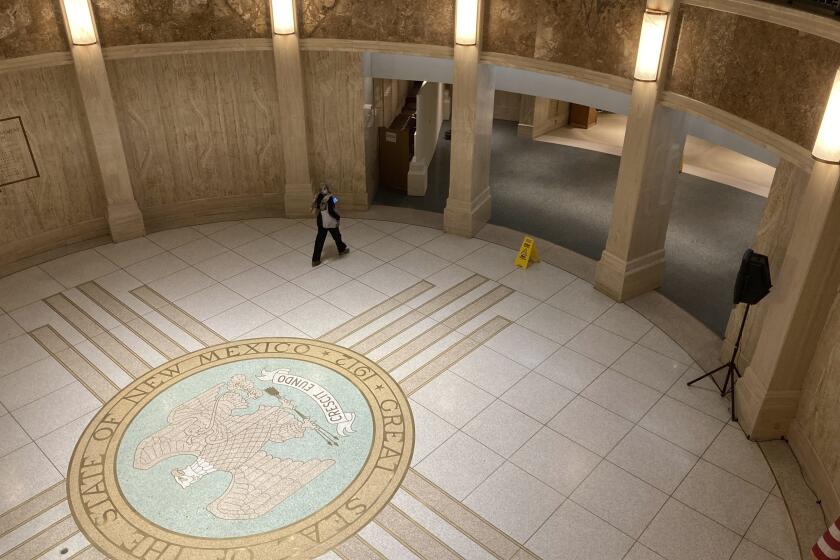Why is the Taliban on such a winning streak, and can the tide be turned?
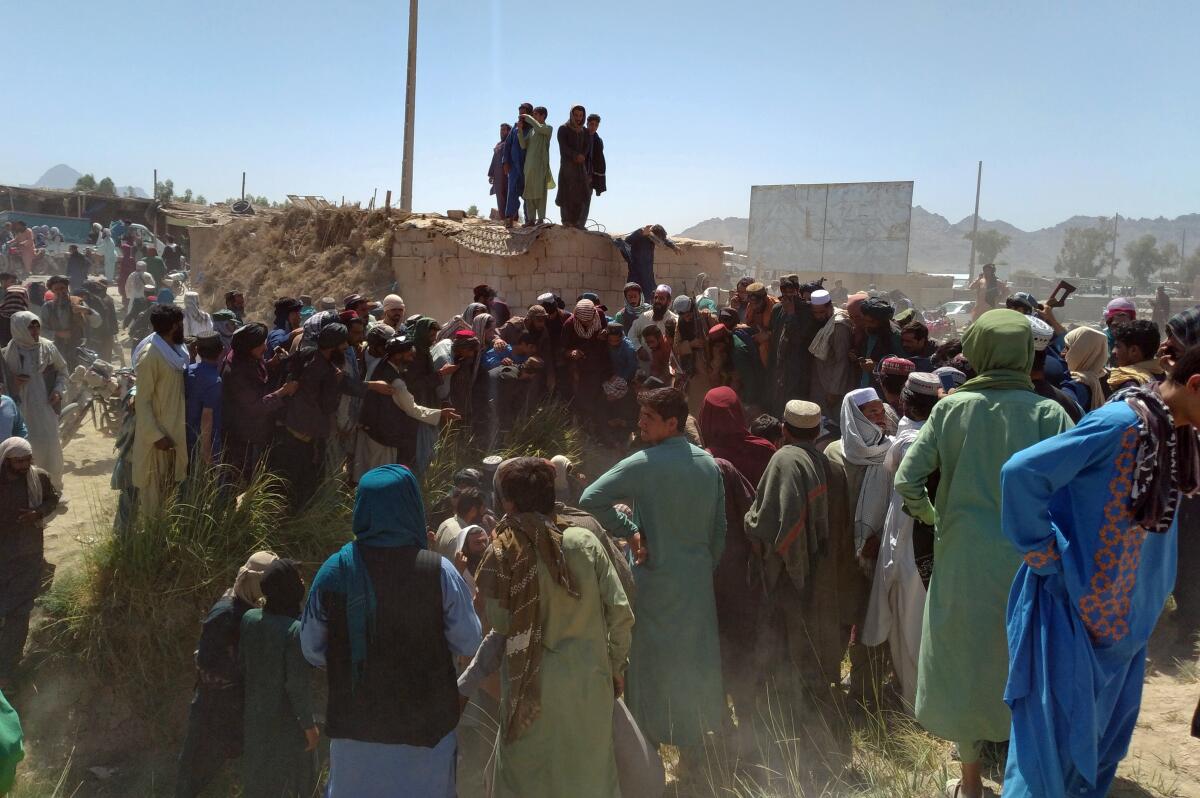
It’s been a punishing few days for Afghanistan’s U.S.-created and supported army.
Since Friday, the Taliban has overrun bastions of government control, snatching more than a quarter of Afghanistan’s 34 provincial capitals on its way to controlling an estimated 65% of the country. On Wednesday, Afghan President Ashraf Ghani raced to the north to rally a defense of besieged Mazar-i-Sharif, the country’s fourth-largest city.
With U.S. forces set to complete their pullout in less than three weeks, the Taliban’s breakneck advance has many observers asking: After two decades and billions of dollars spent by the U.S. and its partners to create effective Afghan fighting forces, what happened? And can they stop the Taliban from taking over the entire country?
Here’s a look at the situation.
‘Ghost’ fighters
On paper, the Taliban should be no match for the Afghan National Defense and Security Forces, known as the ANDSF. According to the latest report from the Special Inspector General for Afghanistan Reconstruction, or SIGAR, a U.S. government watchdog, the ANDSF comprises 300,699 security personnel, including army, police and air force members. Around one-fifth of them are highly trained special forces operatives, then there are undisclosed figures for CIA-trained paramilitary groups as well as militias associated with the country’s warlords.
The Taliban, the SIGAR report estimates, has around 75,000 fighters.
Taliban fighters have seized several provincial capitals in recent days, marking a ‘deadlier and more destructive phase’ of the war in Afghanistan.
But those figures should be treated with skepticism. Corruption, which pervades the Afghan security forces just as much as it does the government, means there are “ghost” soldiers and police — personnel who either never show up or never existed but are on the books so that officials can pocket their salaries.
It’s difficult to gauge the scale of the problem, but in 2019, a new payroll system purged more than 10% from the rolls. A year later, another SIGAR report found a gap of 58,478 personnel between recorded and actual strength levels.
The problem is worse among the Afghan police, especially in the country’s south. SIGAR reported in 2020 that, in the southern provinces — areas with pro-Taliban sentiment — 50% to 70% of police positions were for personnel who didn’t exist. (That report also found that half of them use drugs.)
“For a long time, people in the U.S. and the NATO advisory mission have known that the Afghan police are notoriously corrupt ,” said Andrew Watkins, senior analyst for Afghanistan at the International Crisis Group. He added that although the new payroll system had gone some way toward improving the situation, commanders were now skimming off their subordinates’ salaries.
“Whatever solution there has been for corruption, corruption has found a way,” he said.
Uneven abilities
When asked last month whether he trusted the Taliban, President Biden brushed off the question, saying instead that he trusted “the capacity of the Afghan military, who is better-trained, better-equipped and … more competent in terms of conducting war.”
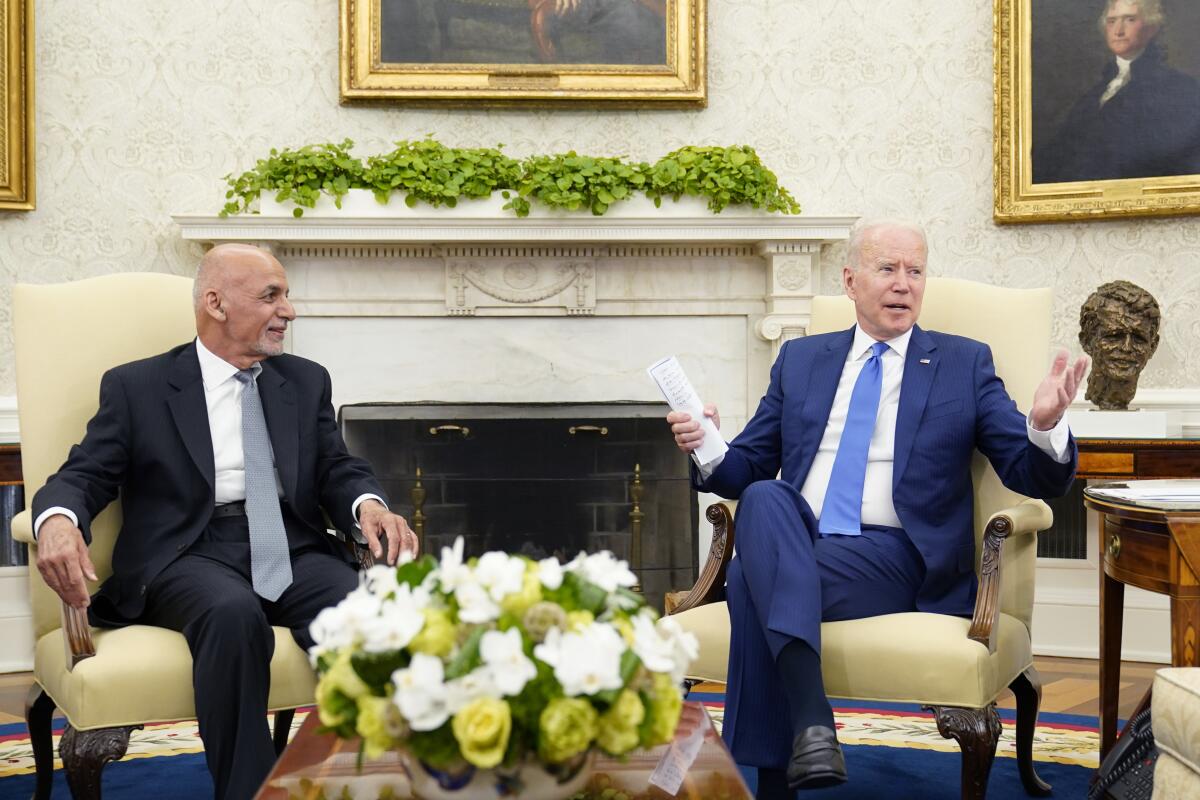
But only a portion of the military would meet that criteria, chief among them the special forces, which are estimated to include some 56,000 operatives. The performance of other sections of the military has been less encouraging, with many observers complaining of a lack of motivation to fight or of personnel acting as little more than placeholders.
“They’re meant to sit in checkpoints and act as a static representation of government presence,” Watkins said. “It’s understood that they don’t fight effectively — they’re certainly not advancing — and that they’re not an offensive force.”
That has led to an all-too-frequent routine on the battlefield: Special forces dislodge the Taliban from an area, only for it to be lost again a short time later when other security personnel — whether army, police or local militias — come in to secure those gains and flee before a Taliban counterattack.
Overreliance on air power
When these less-trained troops do fight, they’ve often looked to air support for cover. But much of that air power has come from the U.S. and its NATO allies, meaning that, as the U.S. draws down, local troops are having to rely more on the Afghan air force for close support, reconnaissance and intelligence-gathering.
A ride-along with the Afghan Air Force
The July SIGAR report says all aircraft types in the Afghan air force are flying “at least 25% over their recommended scheduled maintenance.” Crews, it says, “remain overtaxed” by an increasingly untenable operations tempo.
Just like U.S. and NATO troops, Western contractors who are meant to service the aircraft and repair battle damage are also “going to zero,” meaning they are set to depart the country by Aug. 31, with still no concrete plans as to how the air force will be maintained. That’s especially detrimental to the UH-60 Black Hawks, helicopters that are used for missions including repulsing Taliban onslaught, evacuating casualties and resupplying Afghan forces.
Logistical hurdles
Perhaps the biggest problem facing the ANDSF isn’t training or equipment but logistics. With its takeover of rural areas, the Taliban also gains control over more than 80% of the country’s highways. That figure has only increased in recent days as the group has taken additional territory, such that any attempt to resupply the thousands of army and police bases and checkpoints must be done almost exclusively by air.
In other words, every bullet, every mortar shell, every gallon of fuel and often every carton of eggs has to be brought in by already overstretched air force crews. And the greater the distance from Kabul or primary bases in Kandahar and elsewhere, the more likely the outpost will fall.
As U.S. forces pull out from Afghanistan, the Taliban is in the ascendant — and threatening to retake the city that was its former spiritual capital.
That’s why, for several Afghan officials, including one former high-ranking security head who spoke on condition of anonymity, the recent losses have come as no surprise.
“The ANDSF is very scattered, and it can’t choose its own battlefield,” he said. “The Taliban chooses the battlefield. That meant the ANDSF had to shrink its presence.”
Can the government turn things around?
It depends. This month, Ghani, the president, presented a security plan that he vowed would bring the country back under government control within six months. The general outline of the plan has the army defending strategic targets while the Afghan police provide security in major urban areas.
But another, less-discussed aspect of the plan includes empowering former warlords, including figures with a dark record in Afghan’s conflict-filled history. Ghani’s visit to Mazar-i-Sharif on Wednesday was an effort to organize a defense of the city with warlord Atta Mohammad Noor and notorious militia leader Abdul Rashid Dostum. There have been reports that Ghani has promised the two leaders air support as well as assistance from the special forces corps to claw back northern territories.
Breaking News
Get breaking news, investigations, analysis and more signature journalism from the Los Angeles Times in your inbox.
You may occasionally receive promotional content from the Los Angeles Times.
Could the U.S. get involved again?
Biden has poured cold water on that idea, despite the Afghan army’s staggering pace of losses.
“We trained and equipped with modern equipment over 300,000 Afghan forces. … I’ll insist we continue to keep the commitments we made, providing close air support, making sure that their air force functions and is operable, resupplying their forces with food and equipment and paying all their salaries,” Biden said in a White House briefing Tuesday. “They’ve got to want to fight.”
As for withdrawing U.S. troops within the space of just a few months, “I do not regret my decision,” he said.
More to Read
Sign up for Essential California
The most important California stories and recommendations in your inbox every morning.
You may occasionally receive promotional content from the Los Angeles Times.
